The Papillon, with its distinctive butterfly-like ears, is a captivating canine companion that has charmed hearts for centuries. Renowned for its elegance, playful spirit, and affectionate nature, the Papillon has earned a place as one of the most beloved dog breeds in the world.
Origins and History

Early Development in Europe
The Papillon’s origins can be traced back to 16th-century Europe, where it first emerged as a companion breed favored by nobility and upper classes. Early ancestors of the Papillon were slightly larger and featured erect, fringed ears reminiscent of a butterfly’s wings – hence the name “Papillon”, meaning butterfly in French.
These early Continental Toy Spaniels, as they were known, were popular in courts across Europe including France, Italy, Belgium, and Spain. The breed is believed to have originated from crosses between miniature Spaniels and other toy dog breeds. Selective breeding over centuries resulted in the Continental Toy Spaniel refining into the smaller, finely-boned Papillon we know today.
Arrival in England and America
By the 17th century, the Continental Toy Spaniel had made its way to England, where its dainty size and silky coat made it a hit with English nobles as well. Here the breed diverged into two varieties – the Phalène, with drooping ears, and the Papillon, with fully erect ears. Both types remained highly popular as lapdogs and companions to the upper classes in Western Europe.
Papillons were later brought to the United States in the 19th century and recognized by the American Kennel Club in 1935. They quickly became favorites for their intelligence, athleticism, and affectionate nature. Today, the Papillon remains one of the top companion breeds internationally.
Appearance
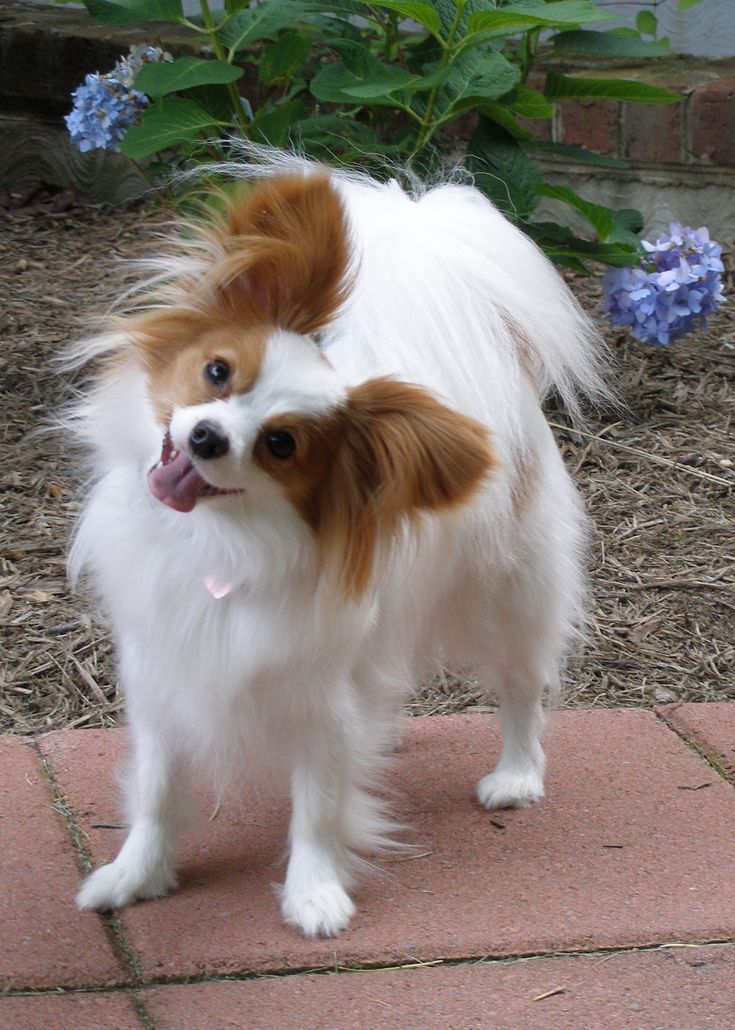
Distinctive Butterfly Ears
The Papillon’s most distinguishing characteristic is its remarkably large, well-fringed ears that stand fully erect. When attentive, the ears appear to flutter like a butterfly’s wings – a quality that no doubt inspired its name centuries ago. Two ear types emerged through selective breeding – the completely erect ears of the Papillon, and the drooping, hound-like ears of the Phalène variety.
Petite and Fine-Boned Frame
In addition to its ears, the Papillon is defined by its petite, fine-boned structure. It is a small breed that weighs 8 to 10 pounds on average and stands just 8 to 11 inches tall. The body is slender but not fragile, with a narrow chest and lean muscles that give it an elegant, delicate appearance. Its light frame enables an energetic, lively gait and movement.
Long, Flowing Single Coat
The Papillon sports a long, silky single coat that is abundantly covered in fringes and feathering. It lacks an undercoat, making the Papillon a light shedder that requires relatively low maintenance grooming. Papillons display a wide variety of colors and patterns, including white, black, brown, red, sable, brindle, and combinations of those colors.
Temperament and Personality
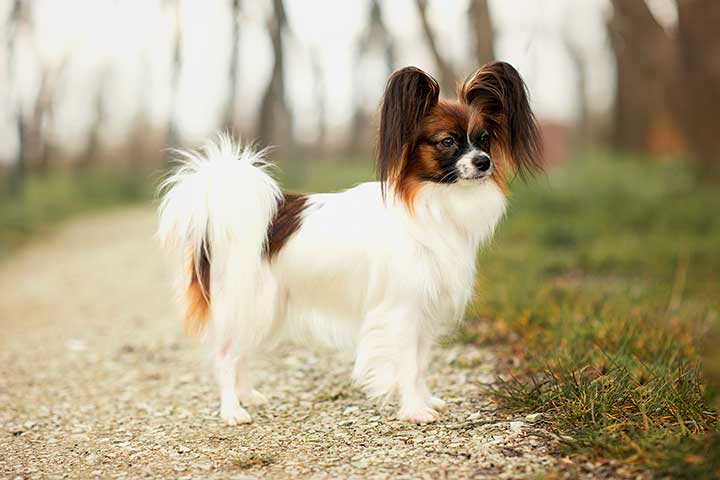
Affectionate Lapdogs
The Papillon’s most renowned trait is its affectionate, outgoing personality. It thrives on human interaction and bonds very closely with its family members, traditionally serving as a constant companion. Papillons are often described as little shadows that eagerly follow their owners around the home. They enjoy being lapdogs that receive plenty of attention and petting.
Playful and Adventurous
While content snuggling on the couch, Papillons also have an energetic, playful side. They enjoy interactive games such as fetch and learn tricks quickly. Thanks to their athletic build and lively nature, Papillons also make excellent agility dogs. They are small but surprisingly sturdy, with no reservations about keeping up with big dogs during playtime.
Intelligent and Inquisitive
The Papillon is praised for its sharp mind and curiosity about the world around it. They pick up on cues quickly, respond well to training, and can enjoy learning tricks or solve puzzle toys. Papillons will also eagerly explore new environments while staying attuned to their owner’s voice and touch.
Training and Exercise Needs
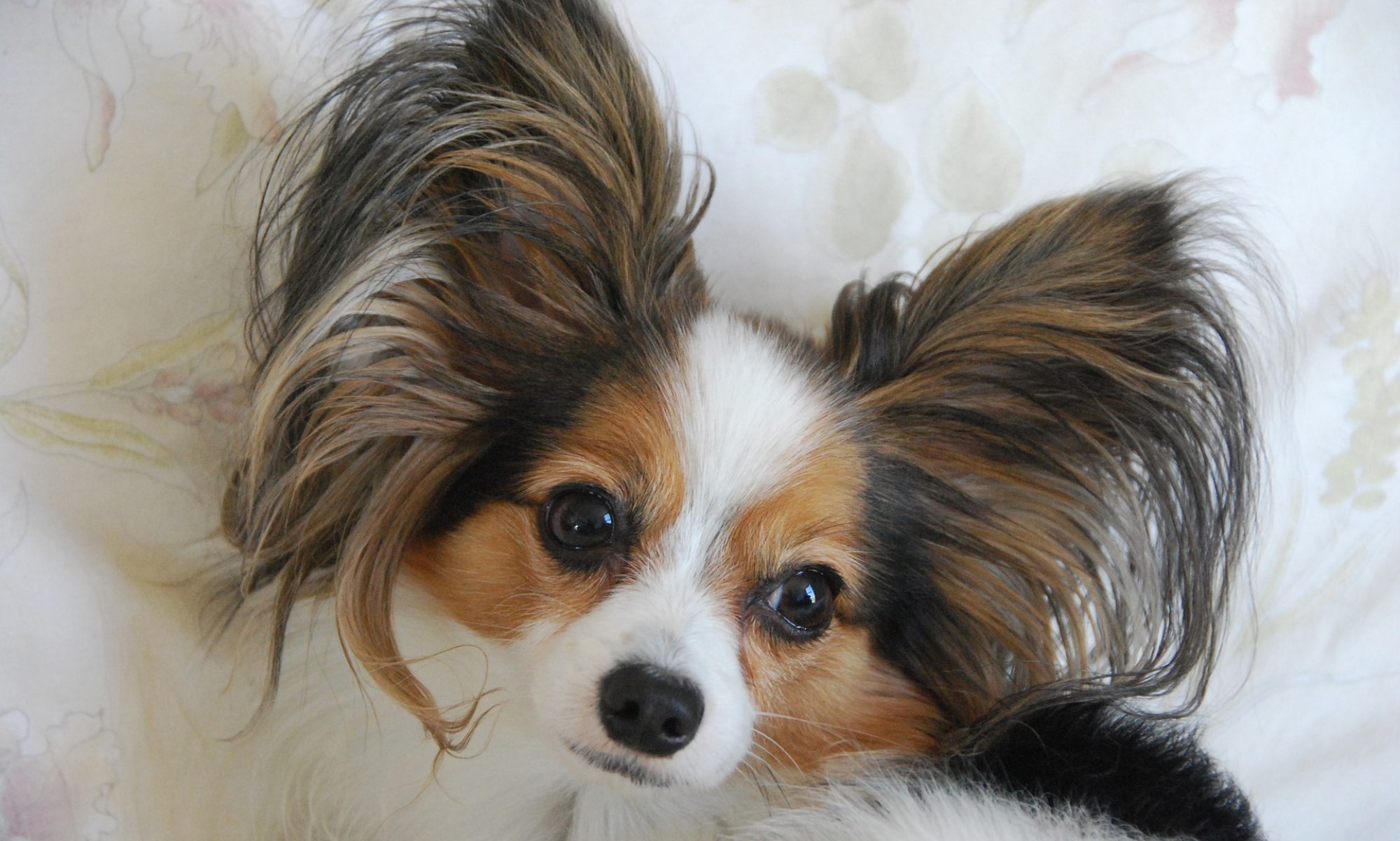
Reward-Based Training Methods
Smart and eager to please, Papillons respond very well to consistent training methods that utilize praise, play, and food rewards. Harsh corrections should be avoided, as Papillons are sensitive dogs that will shut down if handled roughly. Positive reinforcement allows Papillons to build confidence while having fun with their owner.
Occasional repetition may be needed for certain behaviors to become reliable cues, but Papillons generally have good retention for what they learn. Their strong desire to receive rewards helps motivate them during training.
Moderate Activity Levels
Despite their small size, Papillons have a considerable amount of energy. Most are quite lively indoors and enjoy having an outlet for play and interaction with people or other pets. Due to their build, Papillons should not be over-exerted but need at least 20 to 30 minutes of activity daily.
Beyond daily walks, Papillons enjoy all forms of play that engages their minds and bodies such as fetching toys, learning tricks, joining kids in the backyard, or running through agility courses. As with all dogs, Papillons need access to fresh water and opportunities to relieve themselves regularly.
Health and Care
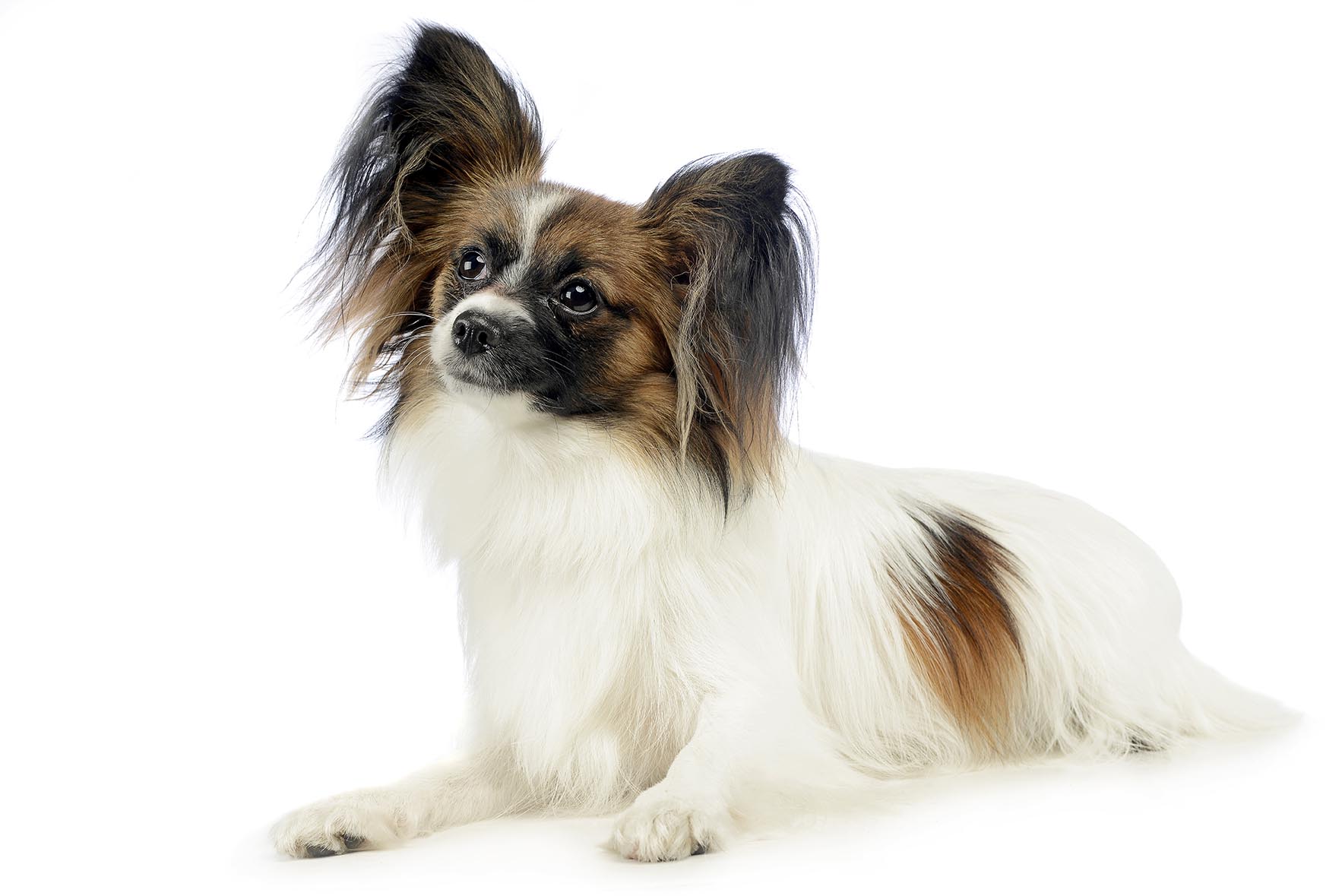
minor genetic health issues
Overall, the Papillon is a hardy, resilient small dog with relatively few major health problems. Responsible breeding has helped minimize risks for inherited diseases in Papillons. With good care and nutrition, the average Papillon will enjoy a long 13- to 15-year lifespan.
However, Papillons can be prone to issues such as luxating patellas, dental problems, and sensitive digestive systems. Eye issues like progressive retinal atrophy may also emerge later in a Papillon’s senior years. Catching and managing minor problems early helps prevent them from escalating in Papillons.
Routine Wellness Care
Like all breeds, Papillons benefit from proactive health maintenance measures. Annual veterinary exams and bloodwork help monitor organ function, especially kidney and liver. Cleanings and assessment of teeth and gums may be recommended every 6 to 12 months as well if plaque accumulates quickly.
Papillon owners should also partner with their vet to begin a vaccine, deworming, and flea/tick prevention regime tailored to their dog’s lifestyle and disease risks. Keeping accurate medical records aids in continuity of care for a Papillon’s health over its lifetime. With attentive care, Papillons can thrive well into old age.
Grooming Needs
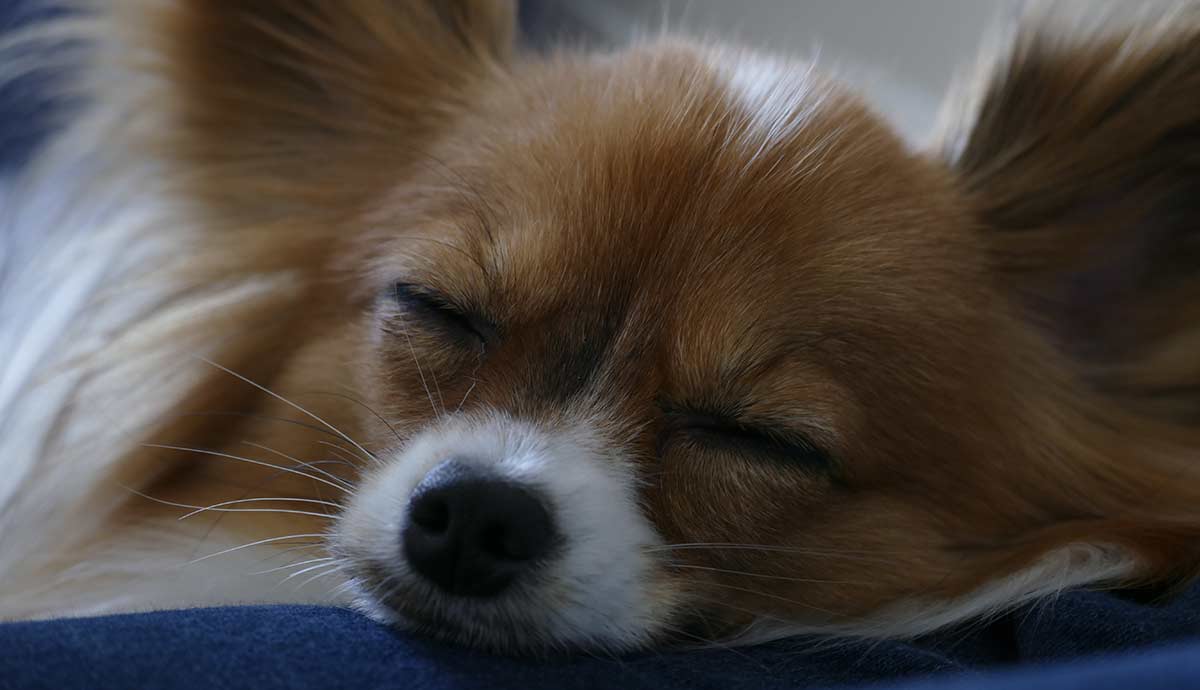
Frequent Brushing
The Papillon’s long, abundant coat requires frequent brushing, generally on a weekly basis. Using a pin brush and metal comb allows owners to reach down to the skin and distribute naturally-produced oils along the hair shafts for shine and strength. Brushing also removes any loose hairs and prevents painful mats from forming close to the skin.
Owners may opt for daily brushing during seasonal shedding periods when the Papillon blows out its undercoat. Consistent brushing when young accustoms the dog to handling and grooming later in life. Always inspect the Papillon’s ears, pads, and vent area when brushing as well.
Occasional Bathing
Although the Papillon’s coat should not be bathed excessively, the breed does require periodic bathing every few months when accumulated dirt or debris causes the coat to appear dull or matted. Select a mild dog shampoo for use and be sure to thoroughly rinse out all soap residue which can irritate skin if left behind. Avoid getting water in ears and dry completely afterward.
In addition to cleansing fur, bathing offers a good opportunity to trim excess fur from the Papillon’s feet for tidiness and check skin condition over the whole body. Nails may also be trimmed after bathing when they are softened.
Conclusion
With its elegant butterfly ears and petite yet lively frame, the charismatic Papillon has secured its standing as one of the world’s favorite companion dogs. Its affectionate personality, athleticism, and wash-and-wear coat make it an ideal pet for both families and urban dwellers. For centuries, the Papillon has touched hearts around the globe – and will no doubt continue lighting up lives with its enduring charm and loyalty. Those seeking a steadfast, fun-loving friend should consider opening their home to this captivating little butterfly dog.